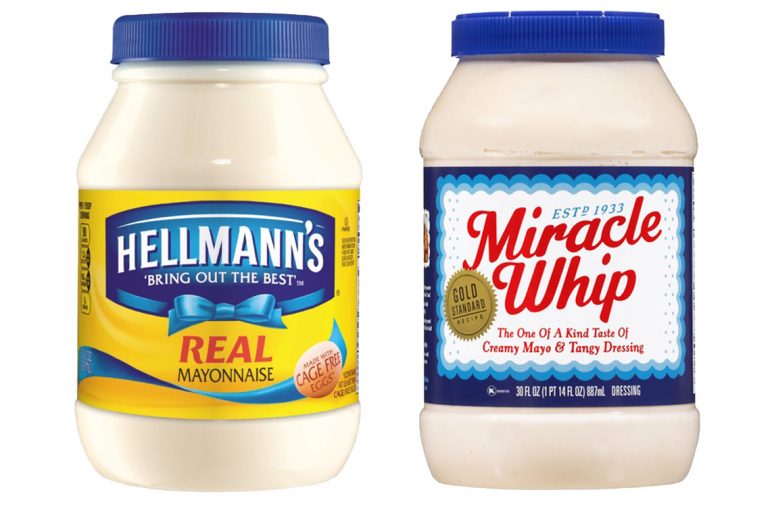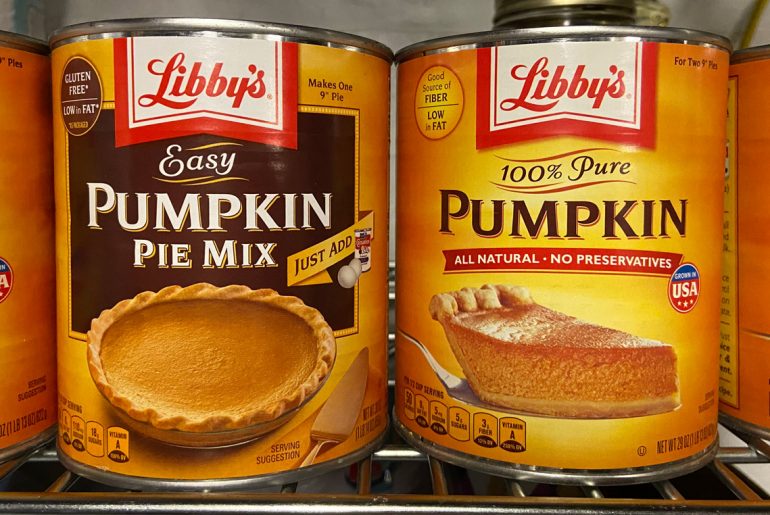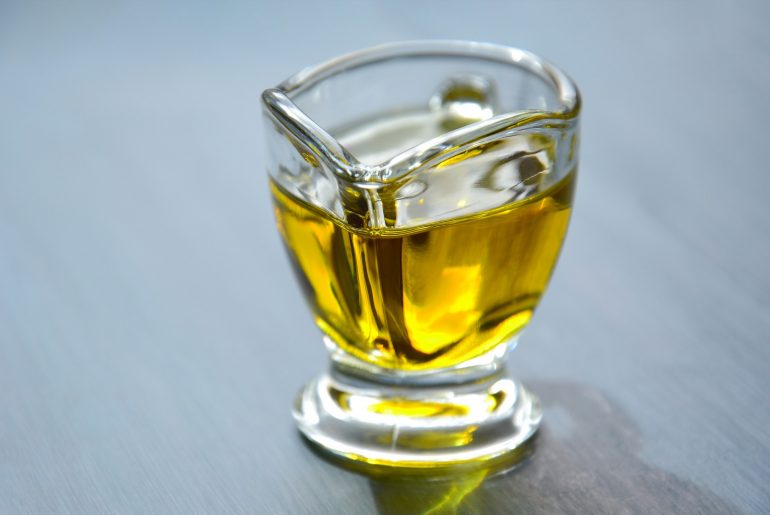Mayonnaise is one of the most versatile condiments on the market. You can thank that creamy combination of egg yolks and oil for tons of delicious salad dressings, dips, super moist steaks, and even that restaurant-quality crispy grilled cheese crust. In fact, it can even be used to shine up the leaves on your dusty old house plant and these 8 other unusual ways. (Who knew?) But when it comes to mayonnaise and Miracle Whip, what’s the difference? Both taste great smeared on top of a turkey sandwich, but can you always substitute one for the other in recipes? Here’s the difference: What is mayonnaise? Mayonnaise is a a delicious condiment made from fat (soybean oil), eggs, and a liquid such as vinegar or lemon juice. The eggs work as a type of glue that holds everything together in a thick, spreadable solid. According to the FDA, anything labeled as “mayonnaise” must contain…
What’s the difference between jam, jelly, marmalade, and preserves?
Is there any more simply satisfying breakfast than toast with jam? Or wait, was that jelly? Or was it preserves? Maybe marmalade? Fruit spreads are all deliciously similar, but they do have definite distinctions. Whether you smother your fresh baguette with preserves from the farmers market or smear your peanut butter and jelly sandwich with Smuckers, it’s important to know the difference because they each have their own texture and sugar content. What they have in common According to the College of Agricultural, Consumer and Environmental Sciences at New Mexico State University, jam, jelly, preserves, and marmalades are all made up of the same basic four ingredients: sweeteners (such as can or beet sugar, corn syrup, or honey); naturally occurring acid, pectin (which can be swapped or even eliminated depending on the desired outcome); and of course, fruit. So now that we know what’s in them, what makes them each different?…
What’s the difference between pumpkin puree and pumpkin pie filling?
Stop right there! Before you reach for that can opener, make sure you know the difference between pumpkin puree and pumpkin pie filling. Both are super convenient canned pumpkin products that can save you tons of time and effort, but while they may look alike, you definitely don’t want to use one in place of the other. Adding the wrong product to your pumpkin recipe can spell disaster. Here’s why. pumpkin pie filling The wording is pretty straight forward. Pumpkin pie filling (or pumpkin pie mix) works for pies or other super sweet dishes, as it’s already heavily sweetened. It’s convenient if you don’t want to worry about adding your own sweetener or spices (or if you don’t have common pumpkin pie spices available to you). Check out the 6 biggest mistakes you can make when baking pumpkin pie. pumpkin puree For just about any other recipe, it’s probably pumpkin puree…
What’s the difference between vegetable oil and canola oil?
It can be easy to get canola oil and vegetable oil mixed up. Both are extremely common pale yellow, neutrally flavored, inexpensive oils with high smoke points making them great for high-heat cooking or frying. But these two vegan-friendly options are just as great for baking and sautéing. So, what’s the difference between them, and can they be used interchangeably? The short answer: Canola oil is actually a type of vegetable oil, so yes! You can use canola or vegetable oil when a recipe calls for either. What’s the difference between vegetable and canola oil? Canola oil is a specific type of vegetable oil. It is always derived from the rapeseed plant, a bright yellow plant resembling the mustard seed. The seeds go through an extremely lengthy process before their oils can be extracted. Vegetable oil is a catch-all oil, which — fun fact — does not actually include any…




